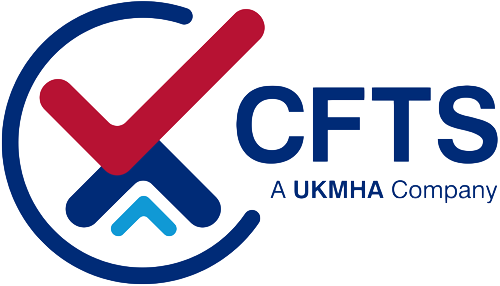A painted line isn’t enough: why forklift safety starts with the truck
5 June 2025
Most businesses know the importance of clear walkways, high-vis clothing, and warning signs. But accidents still happen, and too often it’s because something was wrong with the truck itself.
That’s why this year’s National Forklift Safety Day message is so important:
“A painted line isn’t enough.”
Markings on the floor are helpful. They play their part. But they won’t stop a truck that can’t brake properly. They won’t protect a pedestrian from a machine that veers off course or rolls forward unexpectedly. True safety starts with making sure your forklift is fit for the job — and that means regular, proper inspection by someone who knows exactly what to look for.
Site safety is more than segregation
In busy working environments — warehouses, yards, factories, farms etc. — people and machines often share space. That’s why physical segregation matters. Barriers, crossings, and clearly marked pedestrian routes all help prevent incidents.
But these measures only work if the truck operates safely. And that’s not something you can take for granted.
Every time a forklift moves, it needs to steer precisely, stop predictably, and clearly signal its presence. If the brakes are worn, the horn is broken, or the steering drifts, those painted lines lose their power. Suddenly, your ‘safe zone’ becomes anything but.
And if that forklift hasn’t had a proper inspection, you might not even realise something’s wrong until it’s too late.
What is a Thorough Examination — and why does it matter?
Under UK law, forklifts, telehandlers, tractors etc. must be inspected at least once a year, though it could be more depending on the type of work and the environment in which they are operating. The inspections are similar in principle to an MOT and cover the key components that affect safety.
The safety inspections are required by two separate sets of regulations:
- LOLER: Lifting Operations and Lifting Equipment Regulations
Covers forks, chains, mast, tilt mechanisms, carriage — all the parts involved in lifting. - PUWER: Provision and Use of Work Equipment Regulations
Covers steering, brakes, tyres, lights, audible warnings, seat restraints, and other safety-critical features.
Unfortunately, not all inspections cover both sets of requirements… and that puts people at risk.
A LOLER-only inspection won’t look at brakes. A maintenance check might not be fully independent. And even some Thorough Examinations don’t go far enough.
That’s where the CFTS standard comes in.
The CFTS standard: thorough means thorough
Part of UKMHA, CFTS is the body behind the UK’s national standard for Thorough Examination. The CFTS scheme ensures inspections meet both LOLER and PUWER in full — with no shortcuts.
When you choose a CFTS-accredited examiner, you’re getting:
- A detailed inspection carried out to an agreed national standard
- A provider who is independently assessed and regularly audited
- A clear, traceable record of compliance with UK regulations
CFTS-accredited companies adhere to a strict Quality Assurance Procedural Code that leaves no room for guesswork. Every safety-critical component is covered. Every examiner is trained in accordance with the CFTS standard and regularly assessed. And every report is backed by an official certification system that gives you clear evidence of compliance.
You’re not just meeting your legal obligations; you’re helping keep people safe.
The bigger picture: it’s not just about the operator
When we think about forklift safety, we often focus on the driver. But they’re not the only ones at risk.
In many incidents, the injured party wasn’t even touching the truck — they were walking nearby, carrying out a task, or standing in what should have been a safe space.
If a forklift fails to stop… if the horn doesn’t sound… if the steering drifts… those risks become real.
And as the employer or site manager, the responsibility falls on you to prevent that from happening. That’s not just a moral duty — it’s a legal one.
Make this National Forklift Safety Day count
Forklift incidents are preventable. And the best prevention starts with a safe, legally compliant truck.
So ask yourself:
- Are you confident every forklift on site is being examined to the correct legal standard?
- Are your inspections covering both LOLER and PUWER in full?
- Are you using an examiner who has been independently accredited?
If the answer to any of those is no — or you’re unsure — take action today.
Find your local CFTS-accredited examiner
Because when it comes to forklift safety, a painted line isn’t enough.
